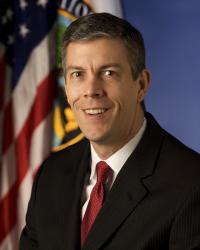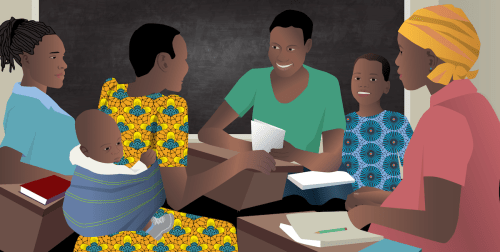Education beyond high school is essential for Americans to prosper in the 21st century. Looking into the past, we have seen the majority of those earning a college degree or other postsecondary credential achieve higher earnings, quality of life, civic engagement, and other positive outcomes. Looking ahead, we see a new future where the vast majority of jobs will require some level of postsecondary education. From either perspective, it’s clear that “college for all” should become our national aspiration. The question is how best to achieve that goal.
Many of the success stories that produced these good outcomes for individuals and our country are the result of Americans who got their postsecondary education and training for free in the 1940s, 50s, 60s and 70s. The Rice Institute, now Rice University in Texas, was free to its students until the 1960s. SUNY and CUNY in New York State were virtually free until the 1980s. The same was true for the University of California, the California State Universities, and the California Community Colleges. Many states made sure that the returning World War II veterans and the next two generations had access to a free postsecondary education.
And it shouldn’t be a surprise that our nation’s economy boomed, along with America’s civic health. In fact, when President Franklin Roosevelt signed the GI Bill in 1944 and President Eisenhower signed the National Defense Student Loan legislation in 1958, millions of veterans, women, and minorities came to college because they could afford it and knew their education beyond high school would make a significant difference in their future livelihood. They bought cars, took out home loans, worked hard, and advanced in their careers. They weren’t burdened by enormous college debt. At the same time, trust in one another and key institutions, as well as civic habits of volunteering, voting and charitable giving, were also on the rise among this Greatest Generation. During this era, the U.S. was first in the world for its college graduates, outpacing Germany, the U.K., and other OECD countries.
By the new century, our educational advantage had clearly slipped. President Bush’s higher education commission highlighted the fact that after decades of progress, other countries were outpacing the United States in educating more of their citizens to advanced levels. President Obama—who also recognized that we had lost our way, that we were 12th in the world in higher education attainment, and that we had mounting student debt exceeding the ability of students to pay off their loans—pointed to a North Star for America to regain its place by making a college education within reach for all hardworking students.
During that same time, following his service as county mayor of Knoxville and implementing the Knoxville Promise, Gov. Bill Haslam (R-Tenn.) launched the Tennessee Promise–a commitment that every high school graduate could obtain at least a free community college education. Since then, Tennessee has added Tennessee Reconnect for adults to obtain a free postsecondary education in fields to help grow their regional economies across the state. Tennessee has some early outcomes of success, as do many other Promise programs across our nation.
OECD now reports that the United States is 10th in the world in postsecondary attainment; we’re making progress, but not nearly fast enough to regain first place.
Today, escalating college costs, stagnant college graduation rates, and the growing $1.5 trillion in college debt has been put on the backs of our nation’s students and families. Far too many are dimming their hopes for an affordable, quality education beyond high school.
These students need help, and local community and state leaders have stepped up to the challenge in the absence of a federal redesign. To date, these leaders have established more than 200 tuition-free, college Promise programs, including governors and legislatures in 23 states that have enacted variations of free community college.
We shouldn’t stop here, but must continue to advance these programs coast to coast. Imagine making the first two years of college free for every American willing to put in the effort, work hard, and help grow the economy through their skills and talents. And imagine the impact of more Americans giving back to their communities and country.
Today, the need for a college education is not just for young people in the decade following high school graduation, as it was for many Baby Boomers and Generation Xers. Acquiring a postsecondary education and continuous learning will be a basic necessity for the millions of Americans whose jobs will increasingly disappear in the global economy, including from robotics and artificial intelligence. Even many of Peter Thiel’s chosen young entrepreneurs who were famously encouraged to drop out of college and start their own businesses returned to postsecondary education to develop new skills and build on their careers.
We must also recognize that the “college for all” goal cannot be narrowly defined to a four-year degree. Rather, postsecondary education can also lead to certificates and open doors to thousands of well-paying jobs, including engine-maintenance technicians, plumbers, electricians, dental hygienists, and radiologic technicians that will move them and our economy forward.
Of course, a percentage of jobs will go to doctors, lawyers, and entrepreneurs who will earn advanced degrees, but even they will be displaced or replaced if they don’t keep up their skills and credentials going forward. New York University just made medical education tuition-free for its students. States and localities should continue to innovate with different models to expand such opportunity beyond this smaller pool.
Various models of free college are sweeping the country in our local communities and states, led by governors and mayors from both parties collaborating with leaders in chambers of commerce, community foundations, and nonprofit organizations.
We can fulfill President Obama’s vision to lead the world in educating our people by accelerating the creative initiatives of Gov. Haslam and the thousands of others who know that the nation’s investment in education beyond high school will provide a remarkable return that will drive our nation forward. Given the challenges facing our economy and democracy, we don’t have a moment to lose.





Commentary
Free college for all will power our 21st-century economy and empower our democracy
September 17, 2018